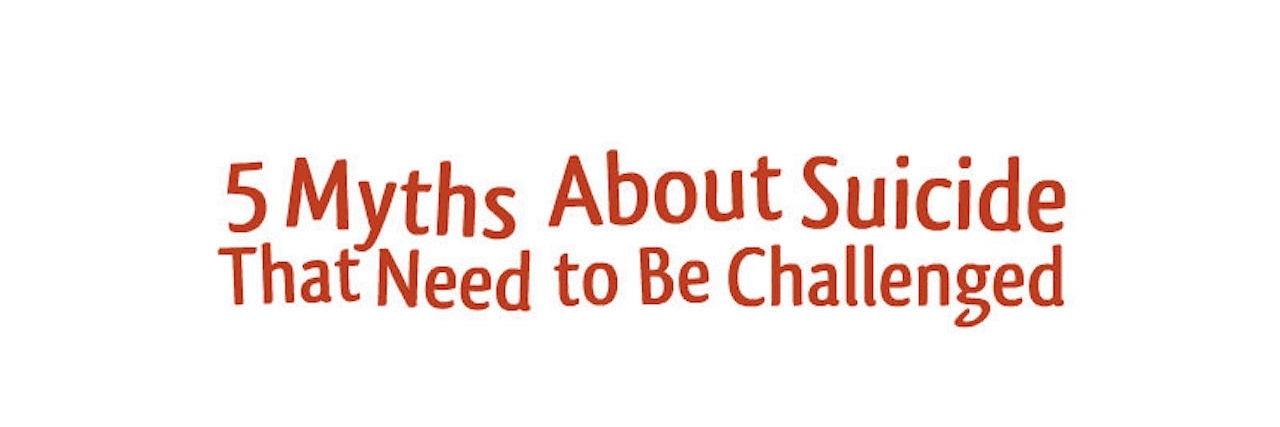As we near the end of National Suicide Prevention Month, it’s important that we not only continue to talk about suicide, but also dispel some common misinformation surrounding it. The more we understand about suicide the less taboo it will become, and the more we can do for individuals who are at risk. In my work with the Centre for Suicide Prevention in Alberta, Canada, here are some common myths I hear and why it’s important to know the truth.
1. Myth: People who talk about suicide should not be taken seriously.
Fact: The American Association of Suicidology lists suicidal talk as a major warning sign for suicidal risk. This myth is dangerous because it suggests those who talk about suicide are just trying to get attention. Suicidal behavior should always be taken seriously. Suicidal talk often begins with suicidal thoughts which can escalate to suicidal acts such as attempted suicide if the appropriate interventions are not made.
2. Myth: Children do not die by suicide.
Fact: It is widely believed children are incapable of dying by suicide because they lack the mental development necessary to carry out such an act. This isn’t true – although there are few studies on the matter because it’s not perceived as a problem. We need to acknowledge that children are capable of suicide.
3. Myth: Talking to youth about suicide will increase suicidal behavior.
Fact: On the contrary, talking about suicide with someone who may be suicidal reduces the risk they may attempt. They should be asked directly if they are having suicidal thoughts or have a plan in place. It’s been shown when people at risk are given the opportunity to talk in therapy, their threat to carry through with suicide diminishes.
4. Myth: Once someone has attempted suicide, they will not attempt again.
Fact: People who have attempted in the past have a much higher risk of a future attempt. The chief predictor of a future suicide is a past attempt. About 20 percent of people who die by suicide have made a prior suicide attempt. It’s particularly a harmful myth when studied in a health care setting. Sometimes health care workers view attempters as attention seekers instead of people at risk of dying. An emphasis needs to be placed on getting those who have attempted suicide the mental health attention they require.
5. Myth: The suicide rate is highest around December holidays.
Fact: This is not true. In fact, the rate peaks in early spring. Some believe the holiday season can be a protective factor for those at risk. Dr. Thomas Joiner, a psychologist whose research focuses on suicide, calls it a “time of togetherness” that can lessen the chances of suicide. We should engage in open and honest conversations about suicide no matter what the season.
If you or someone you know needs help, see our suicide prevention resources.
If you need support right now, call the Suicide Prevention Lifeline at 1-800-273-8255.

